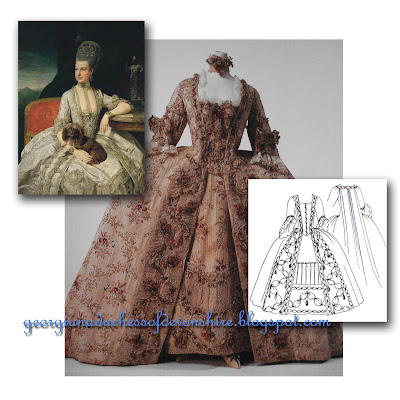Womens clothing in the 18th century
Getting Dressed in the 18th Century - Working Women in Summer, time: 2:03
Результатов: 328
In the 18th century this referred to the less formal clothing for everyone, but still in the best of fashion.Usually worn during the day.(See also Dress and Undress) Gown Throughout the 18th century a woman's dress usually consisted of a gown and petticoat.
John Singleton Copley - 4 women's portraits 18th century hall".The English, on the other hand, were more "egalitarian" in tastes, thus their portraits tended to depict the sitter in outdoor scenes and pastoral attire.Womens clothing in the 18th century Women's clothing for 50 years of age French style was defined by elaborate court dress, colourful and rich in decoration, worn by such iconic fashion figures as Marie Antoinette.Working-class people in 18th century England and the United States often wore the same garments as fashionable people—shirts, waistcoats, coats and breeches for men, and shifts, petticoats, and dresses or jackets for women—but they owned fewer clothes and what they did own was made of cheaper and sturdier fabrics.In other projects Wikimedia Commons.The beautifully patterned Spitalfields silk of this hand-sewn gown indicates a degree of luxury.
Victorian s s s s s s s Edwardian s s.This mantua, made of patterned Spitalfields silk, is typical in style and construction of the s.John Singleton Copley - 4 women's portraits 18th century hall".During the Enlightenment, court dress stayed almost the same while outside of court dress, fashion became less extravagant and shifted more towards comfort rather than courtly display.Pomatum was paste that women used to stiffen their hair.The Metropolitan Museum of Art, —.
Victoria and Albert Museum

The idea of a unique character was becoming an important concept that spanned many types of media including books and prints as Britain wanted to distinguish itself from France.In addition, pomatum and false hair was used to give more height to the hair.This hand-sewn wool ensemble illustrates fashionable formal dress for men in the late s or early s.Shirt sleeves were full, gathered at the wrist and dropped shoulder.The pale blue silk of this hand-sewn example is brocaded in silver in a large-scale pattern of fantastic fruits and leaves, a typical design for the s.During most of this period, the clothes worn by middle - and upper-class children older than toddlers continued to be similar to the clothes worn by adults, with the exception that girls wore back-fastening bodices and petticoats rather than open-fronted robes.
1750–1775 in Western fashion

Victoria and Albert Museum The world's leading museum of art and design.Both sexes wore handkerchiefs or neckerchiefs.Both sexes wore handkerchiefs or neckerchiefs.This hand-sewn coat and waistcoat, made of silk and lined with silk and buckram, illustrate formal daywear for men in the s.Hoop skirts continued to be worn, reaching their largest size in the s, and were sometimes replaced by side-hoops, also called 'false hips', or panniers.In addition, pomatum and false hair was used to give more height to the hair.

The neckline was trimmed with a fabric or lace ruffle, or a neckerchief called a " fichu " could be tucked into the low neckline.It was probably worn during the day - for visiting friends for tea, walking in a park or shopping.Free-hanging pockets were tied around the waist and were accessed through "pocket slits" in the side-seams of the gown or petticoat.It featured a low, oval neckline that bared the shoulders, and the heavily boned bodice laced closed in back, unlike the front-opening robe.The material of this hand-sewn gown has a dotted ground and is printed in a repeating pattern of floral sprays.Court dress, the grand habit de cour or "stiff-bodied" gown, retained the styles of the s.